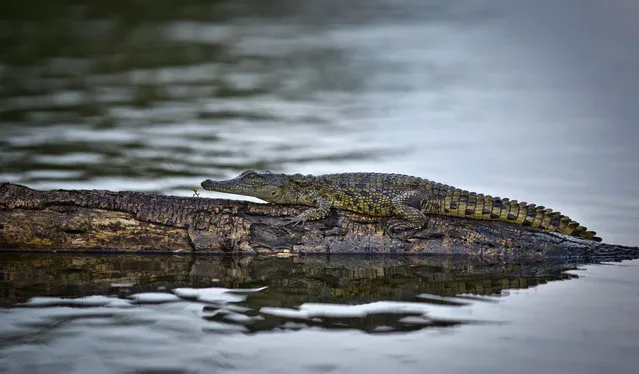
In this photo taken Sunday, September 6, 2015, a baby crocodile lies on a felled tree branch in the waters of Lake Ihema in Akagera National Park, eastern Rwanda. After the 1994 genocide in Rwanda, returning refugees swept into the park with herds of cattle and wiped out the last lions but now the once-abandoned reserve on the border with Tanzania is drawing more tourists, reducing poacher incursions and getting local villagers more involved in conservation – it even re-introduced lions this year. (Photo by Ben Curtis/AP Photo)
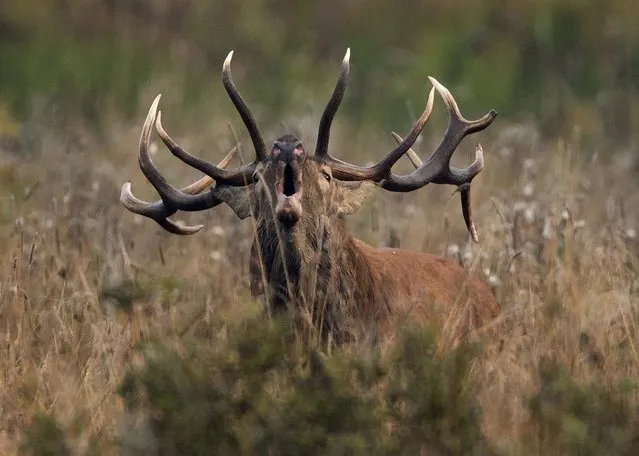
A male deer roars in a field near the village of Dobrovolya, southwest of Minsk, September 20, 2015. (Photo by Vasily Fedosenko/Reuters)
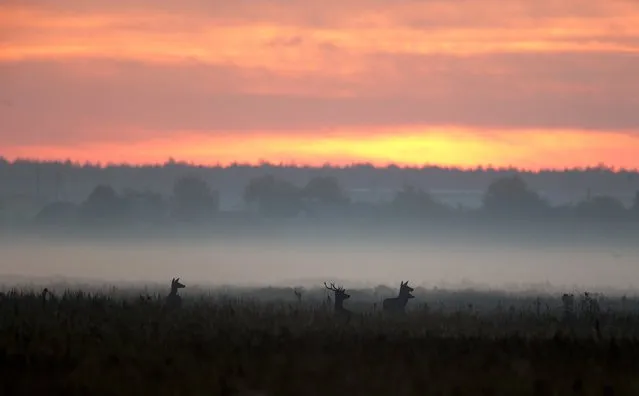
Deers are seen in a field during the dawn near the village of Dobrovolya, southwest of Minsk, September 20, 2015. (Photo by Vasily Fedosenko/Reuters)
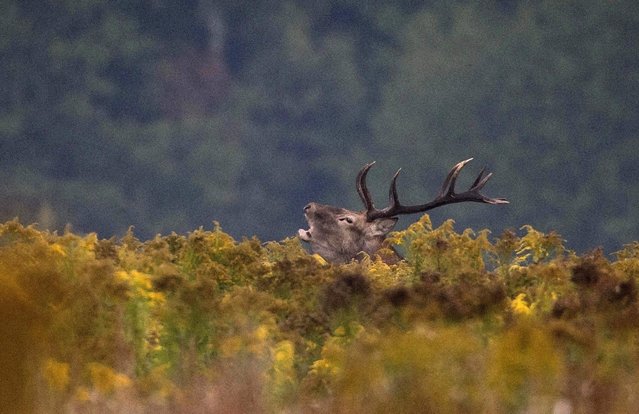
A male deer roars in a field near the village of Dobrovolya, southwest of Minsk, September 20, 2015. (Photo by Vasily Fedosenko/Reuters)
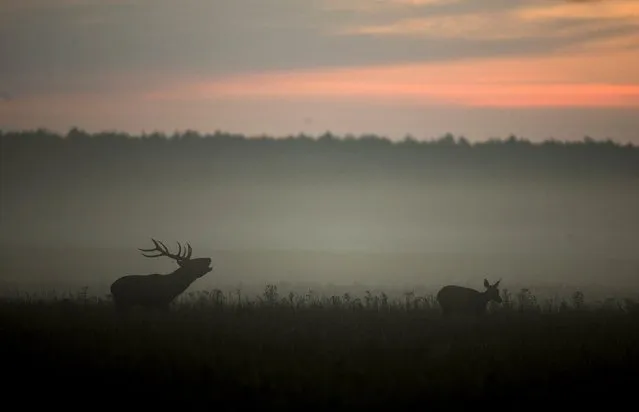
A male deer roars in a field during the dawn near the village of Dobrovolya, southwest of Minsk, September 20, 2015. (Photo by Vasily Fedosenko/Reuters)
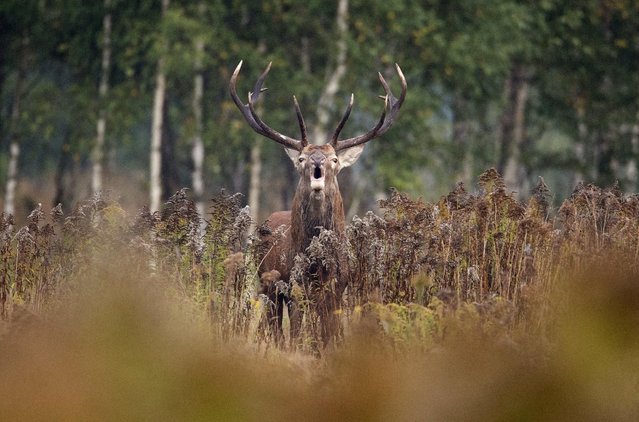
A male deer roars in a field near the village of Dobrovolya, southwest of Minsk, September 20, 2015. (Photo by Vasily Fedosenko/Reuters)
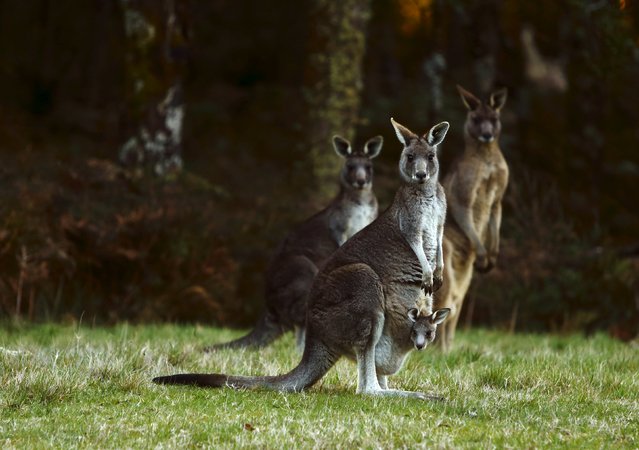
Kangaroos, including one carrying a joey in its pouch, stand by the side of a road on Mount Macedon, outside Melbourne, Australia, September 20, 2015. (Photo by Darrin Zammit Lupi/Reuters)
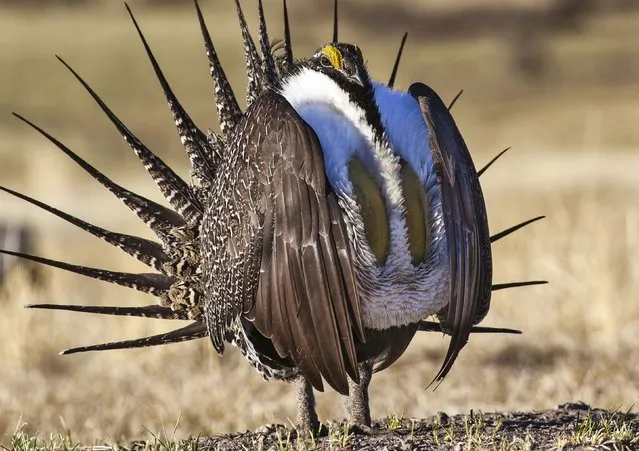
An undated handout provided by the U.S. Bureau of Land Management shows the file photo of a sage grouse. A long-simmering debate in the American West over the imperiled ground-dwelling bird the size of a chicken was headed for climax on September 22, 2015, with the Obama administration expected to unveil a conservation plan lacking Endangered Species Act protections. (Photo by Bob Wick/Reuters/BLM)
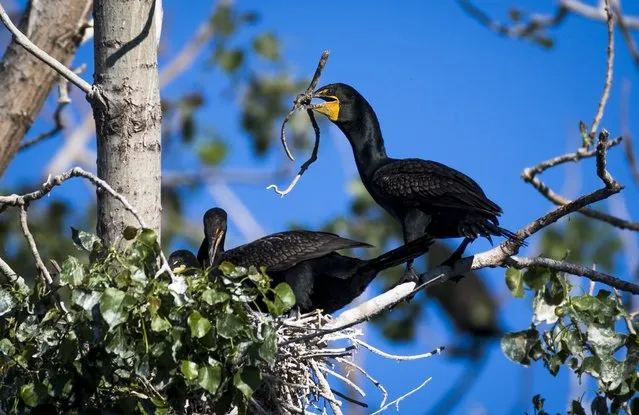
Double-crested cormorants nest at Tommy Thompson Park located on a man-made peninsula, known as the Leslie Street Spit, in Toronto June 24, 2015. It was created over 60 years ago by the dumping of dredged sand, concrete chunks and earth fill, expanding what was once just a thin strip of land in the city's busy harbor. An unexpected urban oasis, the development brings marshes, lagoons and forests to the centre of Canada's largest city. (Photo by Mark Blinch/Reuters)
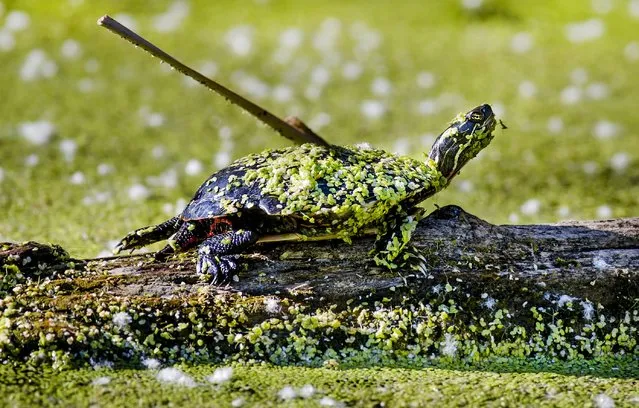
A painted turtle sits on a log at Tommy Thompson Park located on a man-made peninsula known as the Leslie Street Spit, in Toronto June 24, 2015. (Photo by Mark Blinch/Reuters)
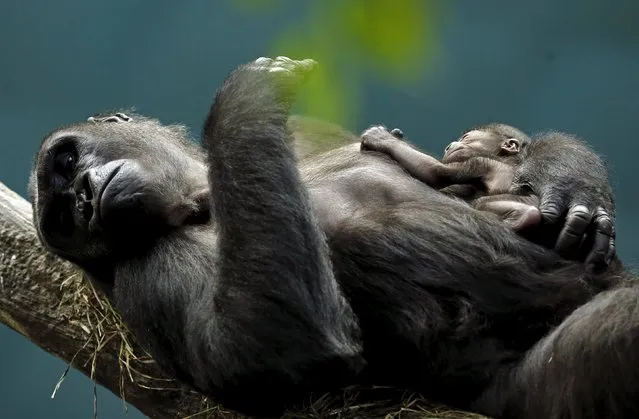
Western lowland gorilla Kamba lays on a branch with her one-day-old son Zachary at the Brookfield Zoo in Brookfield, Illinois, United States, September 24, 2015. (Photo by Jim Young/Reuters)
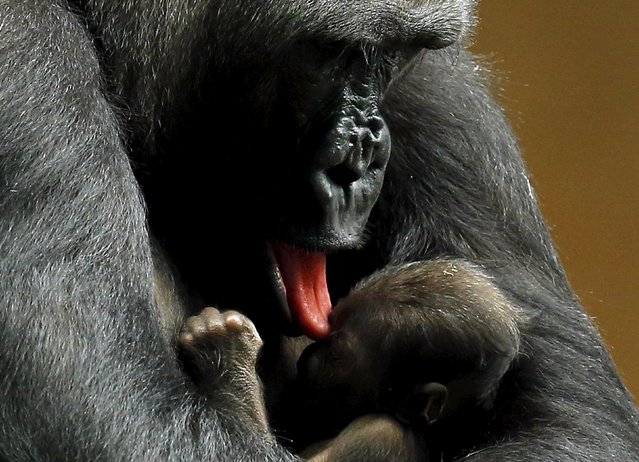
Western lowland gorilla Kamba licks her one-day-old son Zachary at the Brookfield Zoo in Brookfield, Illinois, United States, September 24, 2015. (Photo by Jim Young/Reuters)
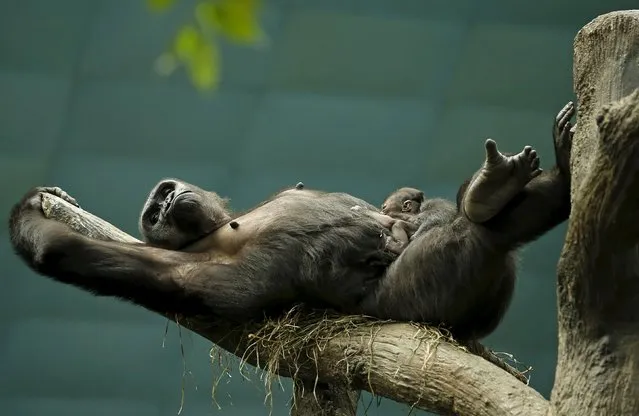
Western lowland gorilla Kamba lays on a branch with her one-day-old son Zachary at the Brookfield Zoo in Brookfield, Illinois, United States, September 24, 2015. (Photo by Jim Young/Reuters)
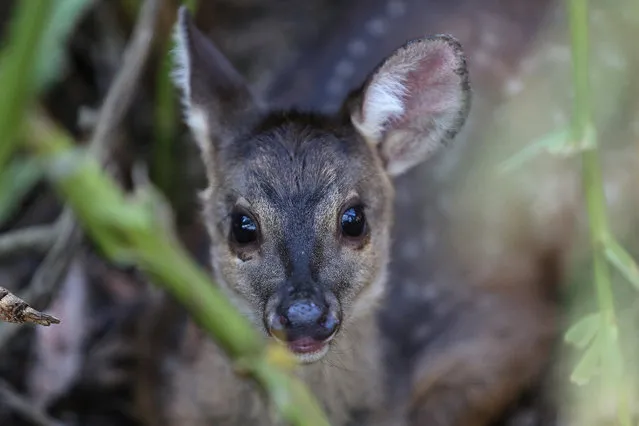
Photo taken on September 19, 2015 shows a baby gray brocket at the “Parque Estoril” zoo in Sao Bernardo do Campo of Sao Paulo, Brazil. According to local press, the “Parque Estoril” zoo houses currently 23 orphan cubs of wild animals rescued in the south region of Sao Paulo, victims of illegal wildlife trade or problems caused by urban growth. According to the zoo, all the animals arrived in the last three months, and many of them, not being able to be reintroduced to their natural habitat, will be used as examples in environmental education classes. (Photo by Rahel Patrasso/Xinhua via ZUMA Wire)
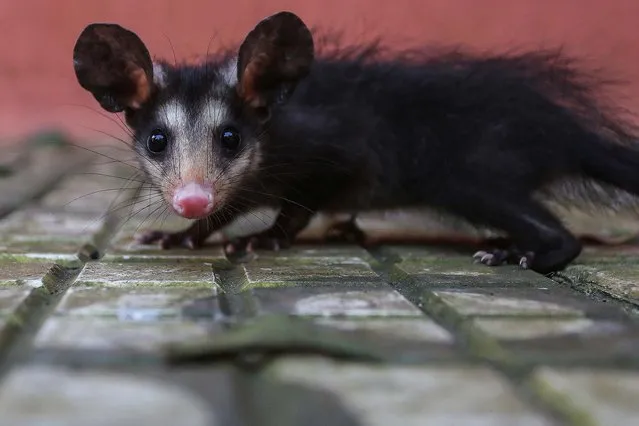
Photo taken on September 19, 2015 shows a baby Brazilian opossum at the “Parque Estoril” zoo in Sao Bernardo do Campo of Sao Paulo, Brazil. According to local press, the “Parque Estoril” zoo houses currently 23 orphan cubs of wild animals rescued in the south region of Sao Paulo, victims of illegal wildlife trade or problems caused by urban growth. According to the zoo, all the animals arrived in the last three months, and many of them, not being able to be reintroduced to their natural habitat, will be used as examples in environmental education classes. (Photo by Rahel Patrasso/Xinhua via ZUMA Wire)
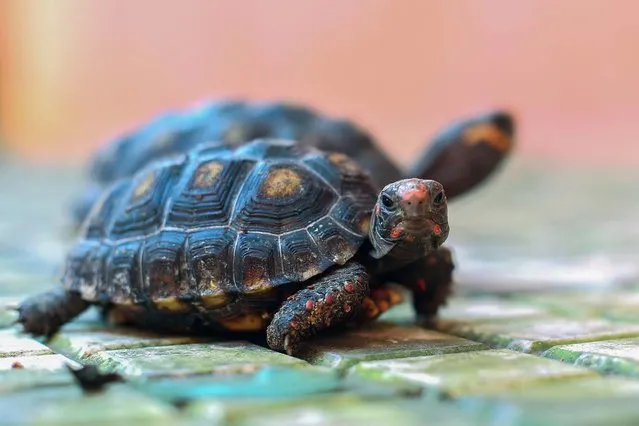
Photo taken on September 19, 2015 shows baby red-footed tortoises at the “Parque Estoril” zoo in Sao Bernardo do Campo of Sao Paulo, Brazil. (Photo by Rahel Patrasso/Xinhua via ZUMA Wire)
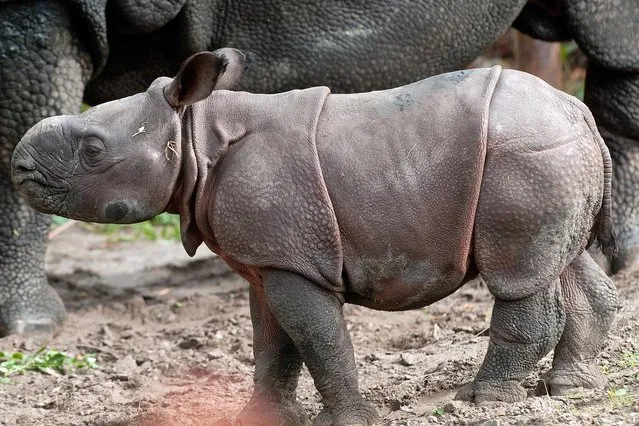
The Rhinoceros baby Thanos stands with his mother in the free ranging enclousure of the Berlin zoo, Germany, 23 September 2015. The baby animal was christened “Thanos” on 22 September 2015. The name means “Immortal” in German. (Photo by Klaus-Dietmar Gabbert/DPA via ZUMA Press)
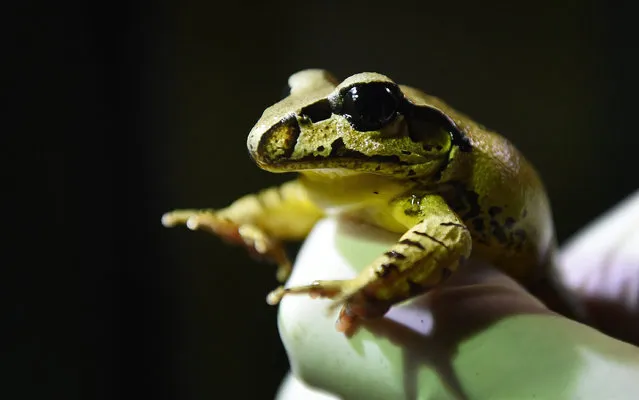
A Stuttering Barred Frog is held at their renovated enclosure “World of Frogs” at the Melbourne Zoo in Melbourne, Australia, 18 September 2015. Many populations of Stuttering frogs have disappeared in the wild and Melbourne Zoo is breeding the southern form of the species to prevent extinction. (Photo by Tracey Nearmy/EPA)
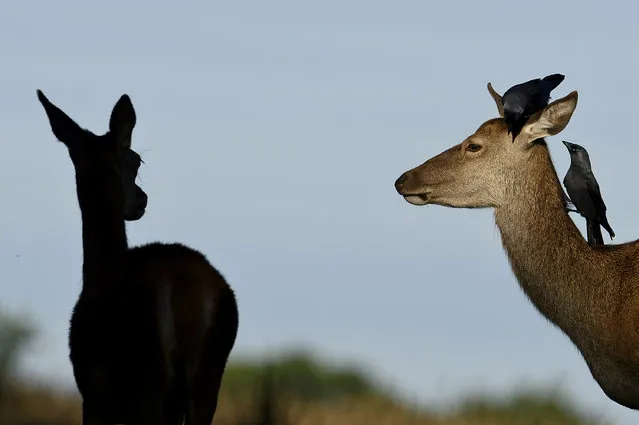
A deer is seen in Richmond Park on the first day of autumn on September 23, 2015 in London, England. The autumnal equinox usually falls around September 22 or 23 as the sun crosses the celestial equator, when day and night are roughly equal length. (Photo by Ben Pruchnie/Getty Images)
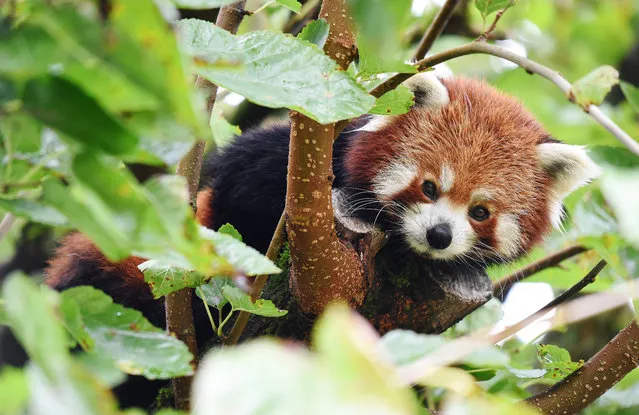
A red panda rests on the branch of a tree at the zoo in Pessac on September 19, 2015. Since 2010 September 19 has been marked as World Red Panda day, to highlight the need for conservation of the endangered species. (Photo by Mehdi Fedouach/AFP Photo)
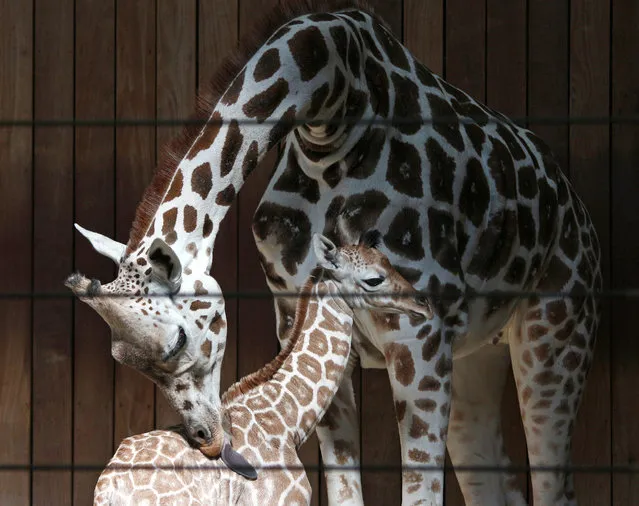
Ziggy licks her yet-to-be named son Tuesday, September 22, 2015, at the Milwaukee County Zoo in Milwaukee. The calf was born Sept. 16 and is the first born at the zoo since 2003. (Photo by Carrie Antlfinger/AP Photo)
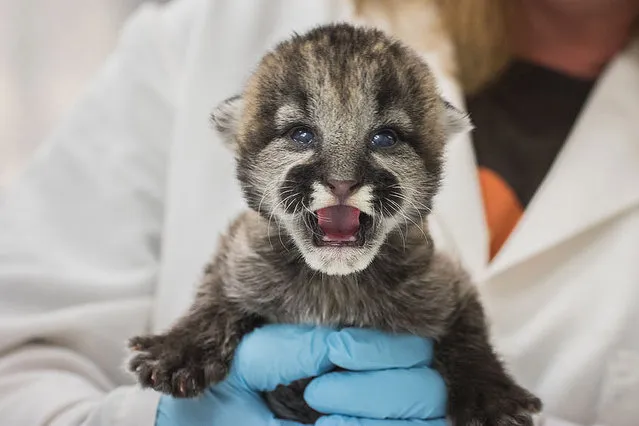
In a Monday, September 21, 2015 photo provided by the Oregon Zoo, a female cougar cub, one of three 10-day-old rescued cubs, gets a checkup at the Oregon Zoo in Portland, Ore. The cubs, discovered in Washington State by Fish and Wildlife officials recently, arrived in Portland September 18, weighing just a pound and a half each. They have yet to cut their teeth, and their eyes are barely open, still cloudy blue and unable to focus, but they have been eating well and are very vocal. (Photo by Kathleen C. Street/Oregon Zoo via AP Photo)
26 Sep 2015 08:00:00,
post received
0 comments
